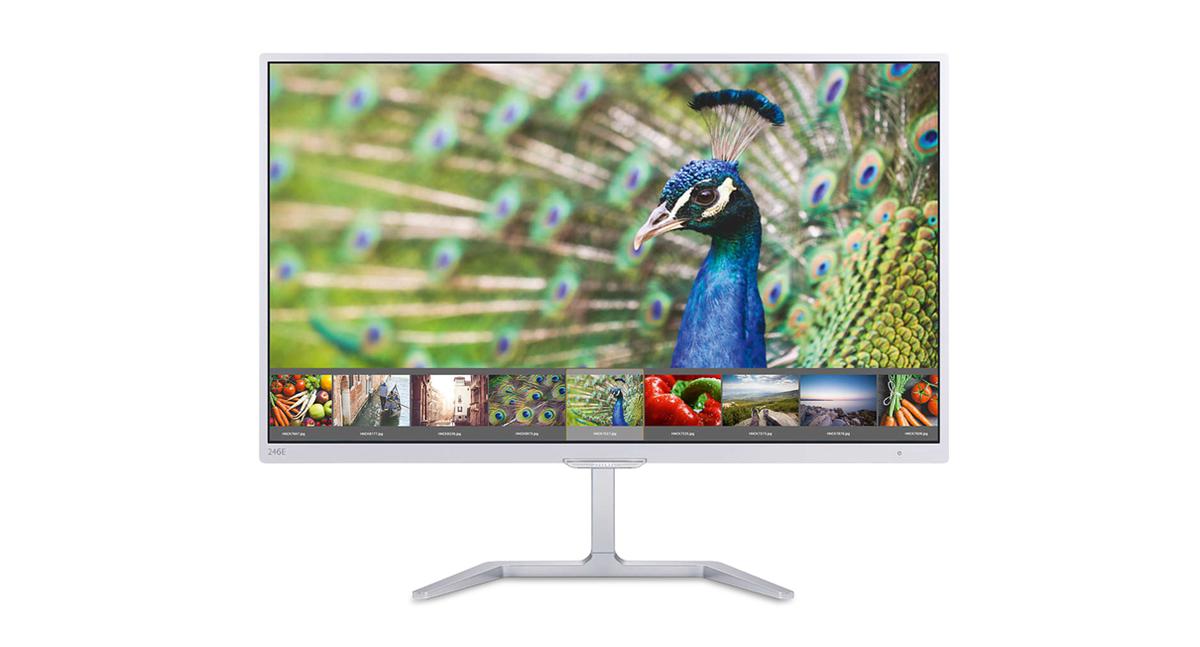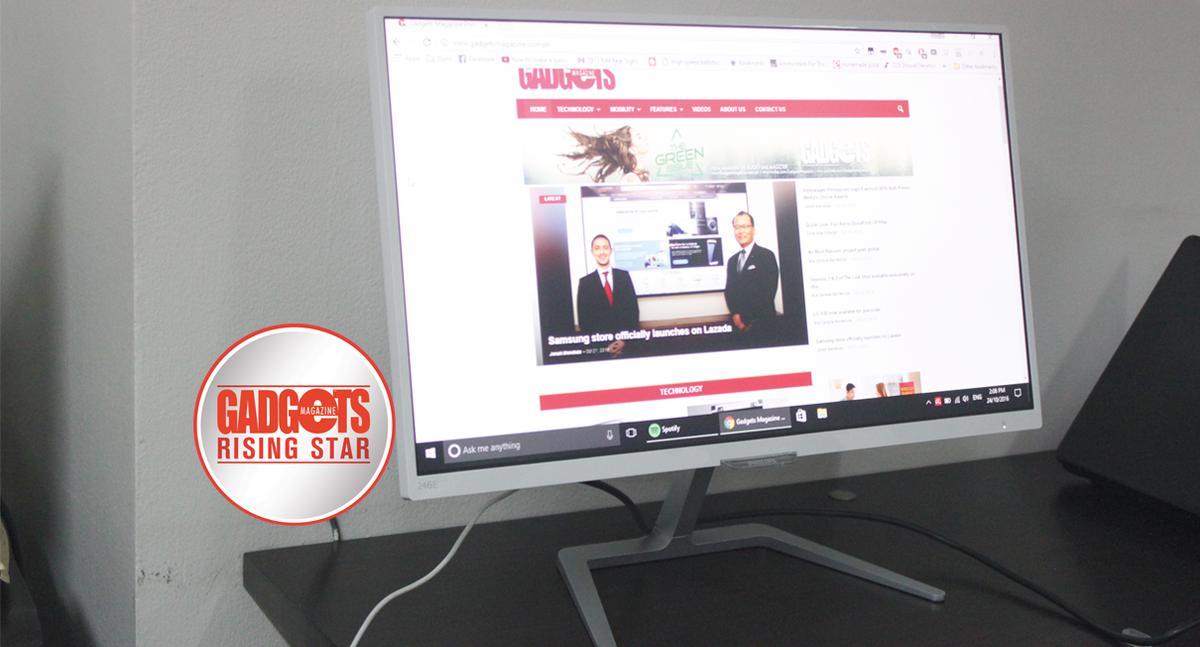Monitors aren’t always the most noteworthy piece of kit in a desktop setup. This has always baffled me, as it’s the one thing in your PC setup you’re going to be staring at 90 percent of the time. It’s a great time to be shopping for monitors. Flat screens are the norm, and you have high-resolution displays that let you enjoy high-quality images right at your desk. Philips has made quite a name for itself with their displays, and we take a look at one of them today.

Design: 4.5/5
The 246E7 turns heads with its simple design. It doesn’t need fancy bells and whistles, glowing lights, or fancy logos. It’s a screen, with a thin bezel in plain white, and a brushed aluminum stand that terminates in narrow feet a few inches past the front of the screen. It’s sleek, modern, and thin, allowing it to sit easily on a desk and not be out of place in an office, or at home.
Hardware: 3/5
The monitor has a generous 23.6 wide viewable image, and a full HD output. Philips has included some of their own technology in the LED monitor, such as a flicker-free panel, and SmartImage picture optimization. A downside of this particular display, however, is the lack of an HDMI port. Checking the rear of the device, you’ll find a single DVI port, and a single VGA port, for older devices. You also have a five-way stick on the rear of the unit to navigate through the menus.
User Experience: 3.5/5
The monitor is simple to set up. The box really only contains three components: the stand, a power brick, and the display itself. Putting it together requires no effort at all. Slot the foot into the space in the back of the screen, and tighten it down with the provided thumb screw. There is also a provision for a wall mount, should you be so inclined.
Once the monitor was put together (it took longer to remove it from the box), we plugged it into one of our VGA-enabled laptops, and we were off. Now, we understand that the old-school, analog VGA port can’t give you a perfect image, but we were otherwise impressed with what we got. It’s not nearly as sharp as what you would get with a DVI or HDMI port, but it was more than passable for the daily tasks we needed it for, and the bottleneck here was clearly the port, and not the output of the panel. There was no flicker, or ghosting, even in the fast action of a movie, and while there was mottling at the edges, it wasn’t so distracting or frustrating as to be taken out of the experience.
DVI is another beast completely. With an output about the same as HDMI, this is where the monitor is meant to be used. Sharp, bright, and vivid, the images on the monitor are good enough to almost forget you don’t have an HDMI port. You might miss the compatibility of HDMI, but those with legacy machines that want a stylish, design-forward display have nothing to lose.
It’s not without a few other issues though. The stand is difficult to bend to your will. You have to give it a bit of elbow grease to make it tilt. It’s solidly built though, so even though you might be afraid of breaking the hinge, it’ll hold out just fine. The menu system is also still a little confusing to navigate, though the little joystick makes the experience bearable.
Value: 3.5/5
Hovering above the PHP 10,000 mark (converted), you can probably forgive the shortcomings of the display. It might not have the best suite of connections, but it’s gorgeous, and works well enough even with an analog input, plus it has Phillips’ name on it, so you know it’s solid.
Bottomline:
If you have an older machine, this is just the ticket.

Also published in GADGETS MAGAZINE November 2016 Issue.
Words by Ren Alcantara
